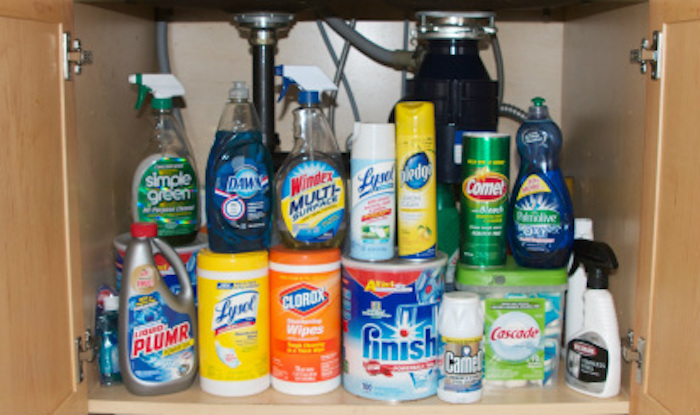Safety First News
Should We Include That Chemical? 3 Common SDS Mistakes Employers Make

February 18, 2018
Many employers can become confused about rules concerning Safety Data Sheets (SDSs). Specifically, the confusion typically involves company use of household chemicals like Clorox or Lysol because many employers believe chemicals intended for household use do not need to be included in the employer’s Safety Data Sheet book. That’s not always true.
We’ve collected a short list of common mistakes employers make with regard to compliance with OSHA’s Hazard Communications (HAZCOM) standard concerning Safety Data Sheets. With OSHA’s Serious penalties know reaching up to $12,934 each, it’s worth brushing up on SDS requirements.
Mistake 1: Not Including A List of Hazardous Chemicals
A fair percentage of employers who actually go to the trouble of establishing a representative book of SDSs don’t know to include a list of hazardous chemicals required by OSHA’s 29 CFR 1910.1200(e)(1)(i). The list of hazardous chemicals is an inventory list of chemicals exposed to workers. The list could be alphabetized and placed at the beginning of the SDS book –like a table of contents without page numbers.
Mistake 2: Improperly Excluding Household Chemicals
Many employers mistakenly assume OSHA does not require inclusion of household chemicals in an SDS book. The confusion likely comes from an exemption in the standard, which concerns the use of household chemicals.
The exemption in question can be found in OSHA’s 29 CFR 1910.1200(b)(6)(9) -“Any consumer product or hazardous substance, as those terms are defined in the Consumer Product Safety Act (15 U.S.C. 2051 et seq.) and Federal Hazardous Substances Act (15 U.S.C. 1261 et seq.) respectively, where the employer can show that it is used in the workplace for the purpose intended by the chemical manufacturer or importer of the product, and the use results in a duration and frequency of exposure which is not greater than the range of exposures that could reasonably be experienced by consumers when used for the purpose intended.”
The key words are “duration” and “frequency.” If the employer has a worker who cleans one-to-three restrooms with Clorox once a week, for example, this use would fall under OSHA’s exemption, and the Clorox SDS would not be required to be included in the employer’s SDS book. Why? Because the duration and frequency are similar to duration and frequency that could reasonably be expected from any household user of the product.
However, if the employer had 10 restrooms that each required cleaning twice a day, that duration and frequency would be considered greater than could be reasonably expected from any household user, and therefor the product would be required to be included in the SDS book.
If an employer is on the fence about whether or not to include a household product in the SDS book, we recommend including it to be on the safe side.
Mistake 3: Incorrectly Interpreting OSHA’s Meaning of “Readily Available” SDSs
OSHA requires Safety Data Sheets to be readily accessible to workers, but in many cases, employers make the mistake of not making the SDSs readily accessible.
The mistake typically is borne from good intentions. For example, employers are sometimes concerned a worker may remove one or more SDSs from the SDS book and not return it, so it is rationalized that only one SDS book should be maintained under lock and key. Of course this is not allowed since workers would need to ask someone else to retrieve the book for them. For larger facilities, having only one book likely would not qualify as being “readily accessible” anyway.
Other employers have found the use of an electronic SDS book effective to ensure the chemical inventory and SDSs stay current. The possible challenge with this approach to managing SDSs is that all workers may not have a computer or ready access to a computer. Asking a supervisor, manager or coworker to look up an SDS on the system or even asking to borrow a computer is not considered “ready access.”
OSHA’s 29 CFR 1910.1200(g)(8) includes the verbiage, “Electronic access and other alternatives to maintaining paper copies of the safety data sheets are permitted as long as no barriers to immediate employee access in each workplace are created by such options.”
For employers who wish to keep an electronic copy of SDSs on a computer database, even if all workers don’t have ready access to a computer, it is still a possible option. A kiosk could be set up to allow all workers without a computer to access any Safety Data Sheet from the employer’s electronic SDS book. Just ensure the kiosks are reasonably available to all areas of the operation such that workers can readily access them, and also ensure there is a backup system in case the primary system malfunctions.
Another useful method to provide access to SDSs is through the use of applications (App). Again, ensure each worker has ready access to smartphones, tablets or other tools to obtain the SDSs through the App, and have a contingency in place in case that system or tool fails.





